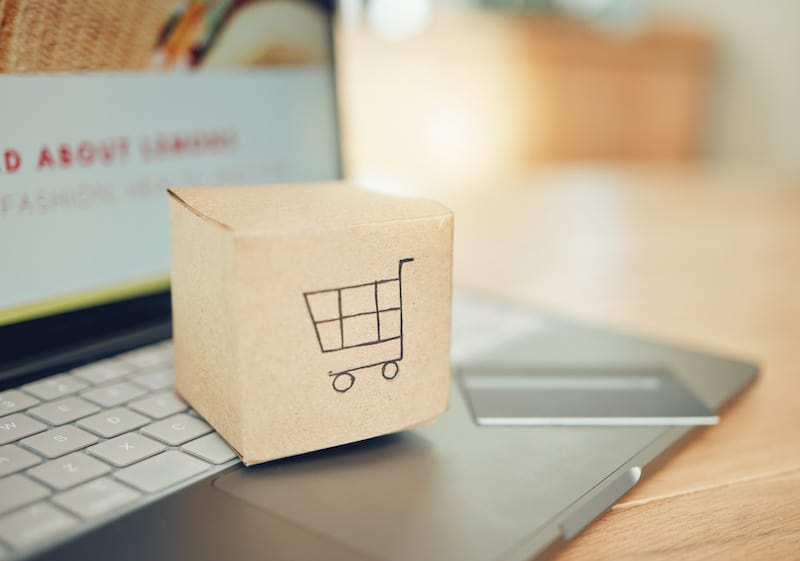Shipping apps are unique services developed to bridge the huge gap between merchants and customers by simplifying the delivery of goods from the seller’s store to the buyer’s door. From their onset, these apps have become part and parcel of our daily lives and have made acquiring products much easier than it was a decade ago.
Businesses of all sizes and large multinational corporations leverage shipping apps to streamline their shipping processes. Whether you require assistance with printing labels, tracking packages, managing rates, or gaining insights into shipping performance, there is undoubtedly a shipping app for you.
So keep reading as we delve deeper into the world of shipping apps – what they are, their features, and how to choose the one for your needs.
Types of Shipping Apps
Several different types of apps can help manage local and international shipping operations. Here are some of the most common types of shipping apps:
Fleet management apps
Fleet management apps allow companies to track their vehicles and drivers. These apps provide live GPS tracking of trucks and vans. They also have features like integrating route planning, job dispatch, and notifications if a driver arrives late to a stop. Fleet managers can use these apps to maximize efficiency, monitor vehicle maintenance needs, and ensure deliveries are made on time.
Parcel tracking apps
Parcel tracking apps allow customers to follow the progress of their package shipments. These apps provide shipment status updates and estimated delivery windows. Customers can see where their package is located, whether it has left the origin facility or is out for delivery. Carriers also use these apps internally to scan packages as they move through the sorting process. The apps integrate with system APIs to automatically populate shipment data.
Freight management apps
Freight management apps are designed for larger international shipments that require trucks, ocean containers, or other modes beyond small packages. These apps focus on functions like booking shipments, tracking freight status, managing documentation compliance, and invoicing. Carriers benefit from streamlined operations while shippers gain visibility and accountability across multiple ports and legs of a shipment.
Last-mile delivery apps
Last-mile delivery apps are optimized for the urban and residential portion of the supply chain. Features include optimized routes, real-time communications, and proof of delivery photos. Retailers and logistics providers use these apps to schedule and orchestrate high volumes of same-day and next-day deliveries. Customers experience improved predictability and service through increased tracking capabilities.
Core Features: What Makes a Shipping App Tick?
Whether shipping a package across the country or worldwide, logistics involves complex coordination between drivers, warehouses, and customers. There are certain key features present at the core of a shipping operation that make shipping apps operate like a well-oiled machine, and they include:
Real-Time Tracking
Real-time tracking is essential for both businesses and customers. Knowing exactly where a package is during its journey builds trust and ensures expectations are met. Advanced tracking features harness location data from drivers’ devices and vehicles to provide up-to-the-second insights into progress.
Customers can look up an order number on their phone at any given time to see estimated delivery windows. For managers, tracking dashboards overview the status of all in-progress shipments.
Route Optimization
Route optimization is another cornerstone technology. With reliable location tracking in place, routing algorithms analyze addresses, package details, and driver availability to build the most efficient itineraries possible. They consider factors like fuel efficiency, traffic patterns, and individual driver schedules.
Well-planned routes save time and money by reducing fuel costs while preventing unnecessary carbon emissions. Happy drivers complete more deliveries per shift.
Inventory Management
Inventory management is vital for fulfillment accuracy. A shipping software needs to know what products are in stock, where they are stored, and how physical movements like deliveries or new arrivals impact availability.
Real-time inventory data powers automated order processing to efficiently pick, pack, and ship the right items. It also prevents accidental overselling of out-of-stock products to customers.
Communication Tools
Communication tools connect all parts of the process. Leveraging the right communication tools helps customers get timely shipping notifications and contact support easily. Drivers use a mobile app to scan packages, record notes, and message dispatch for assistance. Centralized conversation threads between customers, staff, and couriers facilitate quick resolutions to issues when they arise.
Why You Need a Shipping App
As we’ve already seen, shipping is a crucial part of any successful business, whether you sell products online, wholesale goods to stores, or transport items internationally. However, managing shipments through phone calls, emails, and spreadsheets can be time-consuming and error-prone. That’s why you need a shipping app.
A shipping app will streamline your entire shipping process and provide numerous benefits:
Increased efficiency: Manage all your shipments, print labels, track packages, and more from one centralized dashboard. Say goodbye to disorganized spreadsheets and wasted time across multiple platforms.
Reduced costs: Leverage negotiated shipping rates within the app and automate shipping rules always to select the most cost-effective option. An affordable shipping app also offers discounts for high-volume shippers.
Improved customer experience: Customers can track shipments every step of the way. Customized delivery notifications keep them in the loop. Faster resolutions to shipping insurance issues lead to higher satisfaction scores.
Real-time tracking: Apps integrate directly with shipping carriers APIs to pull tracking data into your account in real time. No more waiting hours or days for manual carrier updates.
Powerful analytics: Understand your shipping patterns, costs, carrier performance and more through built-in reports. Make data-driven decisions to optimize processes over time.
Extended capabilities: Many apps offer value-adds like address verification, customs paperwork, returns management, etc. Expand functionality without adding integrations or vendors.
How to Choose the Right Shipping App
Choosing the right shipping app for your business can seem overwhelming with so many shipping options on the market.
Here are the top tips to keep in mind when selecting a shipping solution.
Carrier Support
Thoroughly consider which carriers you use frequently and ensure the app fully supports them. For example, if you primarily ship with UPS, ensure the app has deep integrations to seamlessly create shipping labels, schedule pickups, and track shipments directly through UPS. Avoid apps with limited capabilities for your most used carriers.
Pricing
Compare options like pay-as-you-go vs. subscriptions. With pay-as-you-go, pricing is transparent per label, but you miss out on volume discounts. Subscriptions offer discounted rates the more you ship but require an upfront monthly or annual commitment. Calculate your average monthly shipments to determine the best value. Some apps now offer tiered enterprise pricing for high-volume shippers.
Label Printing
Before choosing a shipping app, you must ask yourself a few questions. Will labels print from any computer, tablet, or phone on the go? Can labels be designed directly in the app, or does an external software need to be installed? Choose an app that provides maximum portability for label printing wherever you are.
Packaging Tools
Beyond basic tools, consider advanced features like the ability to customize box or container sizes to fit irregular items properly. Some apps even generate recommended packaging based on item dimensions to help prevent damage.
Reporting
Look for comprehensive tracking across all shipments, plus insightful analytics on trends over time. Visual dashboards make it easy to analyze popular carrier/service usage or most frequent shipping destinations to help optimize processes.
Integrations
Research pre-built connections to other systems you depend on, like quick order approval via an accounting app or notification of incoming shipments in a CRM. Consider future integration needs as your tech stack expands.
Support
Reach out to test response times before committing. Ask about availability windows, resolution SLAs, and self-serve support options for quicker answers to common questions. Reliable post-sale assistance can make or break the user experience.
Common Challenges and Solutions
Every service has its pros and cons. While shipping apps offer convenience for arranging deliveries, there are some hurdles users may face.
Challenges
Complex interfaces: Shipping app interfaces can be cluttered and confusing, especially for first-time users. Links and options may be unclear.
Delayed or missed deliveries: Despite scheduling, carriers may occasionally be late or miss deliveries due to traffic, accidents, or high volumes.
Carrier issues: Individual carriers on the platform can underperform if they are unorganized, understaffed, or using unreliable vehicles.
Payment errors: Billing and payment errors are possible if there are mistakes entering credit card details or issues with authorization during checkout.
Complaint resolution: If problems arise, getting help from a shipping app’s customer service on some shipping apps can sometimes involve waiting on hold or communicating over multiple emails or chat sessions.
Solutions
While no app is perfect, most shipping providers are looking to resolve issues in the quickest ways. Here are some potential solutions to help you get a better experience using these shipping apps.
For complex interfaces, exploring each menu option can help understand the layout.
Confirming estimated arrival windows allows adjusting schedules if need be.
Careful carrier selection lets you choose reliable providers.
Checking order and payment details prior to submission minimizes errors.
Persistence may be needed when contacting support to resolve issues.
With practice and preventative steps, shipping apps can remain an effective tool for hassle-free delivery management.
Shipping apps have revolutionized how businesses manage their shipping needs. Being able to compare rates, print labels, automate workflows, and track shipments all in one platform brings efficiency and shipping costs savings that were previously out of reach for many growing companies. However, with so many options on the market, it can be challenging to choose the right solution.
In our other post, we’ve reviewed some of the best shipping apps, their features and price so that you’re able to choose the best. When selecting a shipping app, finding one that offers best-in-class rates from all major courier companies, simple integration with existing tech stacks, and robust customer support is essential.
ShipSimple consistently delivers on all of these criteria and more. As Canada’s top discount shipping platform, ShipSimple provides up to 75% savings per shipment and the lowest shipping prices guaranteed. Give ShipSimple a try risk-free and experience better shipping for less!





